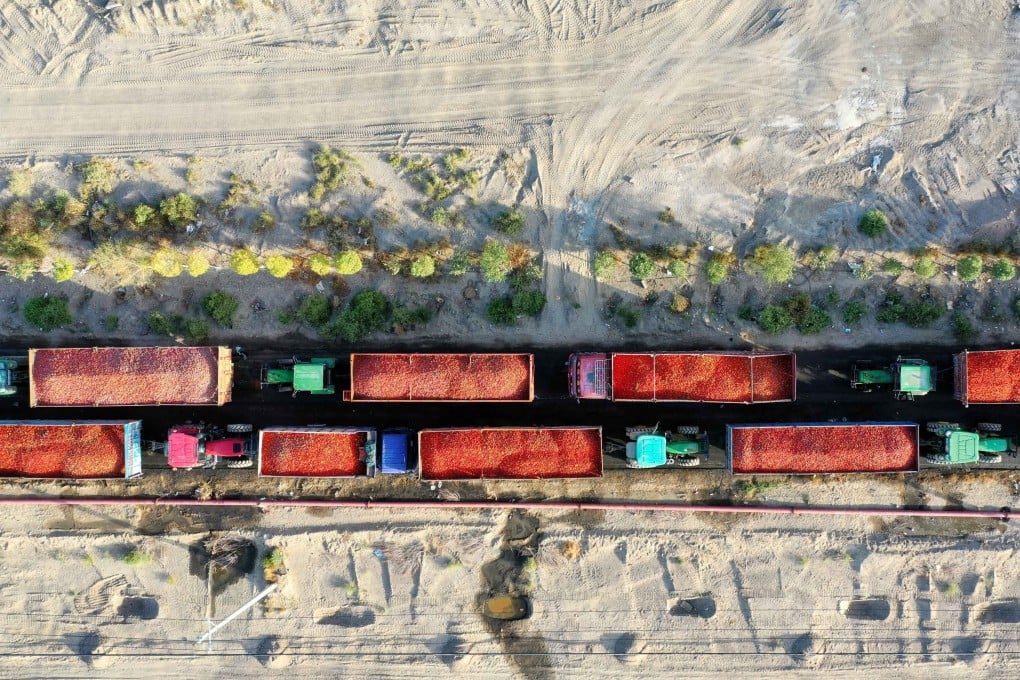Advertisement
Explainer | Why has the US ban on Xinjiang’s tomato exports had such limited effect?
- Tomato products from Xinjiang were designated by Washington as ‘high-risk’ under the Uygur Forced Labour Prevention Act
- But the industry has proved remarkably resilient because it does not rely on American imports, and exports to about 80 countries
Reading Time:3 minutes
Why you can trust SCMP
15

After a sweeping US ban on products from China’s Xinjiang region came into effect in June, two pillars of local agriculture – known as “white and red” – have experienced very different fates.
Xinjiang’s tomato and cotton industries each play a crucial role in the global supply chain; the region produces a quarter of the world’s tomatoes and a fifth of its cotton. But after both were designated by the US as “high-risk” under the Uygur Forced Labour Prevention Act, cotton has suffered the most.
While cotton grown in the region is mostly consumed locally or sold to other provinces to be made into garments and textiles, most tomato products from Xinjiang are exported directly, in theory making them more vulnerable to external demand.
But it has been the price of Xinjiang cotton that has tumbled, while the tomato industry has remained largely intact.
Why has the US ban had minimal impact on Xinjiang tomatoes?
The short answer is the US does not import tomato products from Xinjiang.
Advertisement